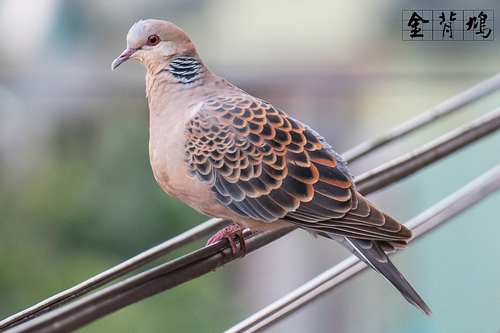
Oriental Turtle-dove
The Oriental Turtle-Dove (*Streptopelia orientalis*) is a member of the dove family (Columbidae) widely distributed across Asia. It is known for its distinctive, soothing call and plays a role in various ecosystems as a seed disperser. While some populations are migratory, others are resident. The species exhibits subtle variations across its range, leading to the recognition of multiple subspecies. It's often associated with open woodlands and agricultural areas, and although not globally threatened, some populations face localized pressures.
30-35 cm
Length
47-55 cm
Wingspan
Least Concern
Conservation Status
Distribution
The Oriental Turtle-Dove has a vast range, extending from Eastern Europe (Ural Mountains) through much of Asia, including Siberia, Japan, the Korean Peninsula, China, India, and Southeast Asia. Some populations undertake significant migrations, while others are resident.
Lifespan
Unknown in the wild; several years in captivity is possible.
Oriental Turtle-dove's Habitat
Habitat Types
Open woodlands, Forest edges, Agricultural lands, Parks and gardens, Scrublands
Climate Zones
Temperate, Subtropical, Tropical
Adaptations
The species is adaptable to a wide variety of habitats, showing a preference for areas with a mix of trees and open ground. Their relatively generalized diet allows them to thrive in different environments.
Variations
Several subspecies are recognized, differing primarily in size and plumage coloration. For example, *S. o. orientalis* is found in central Siberia to Japan and Korea, while *S. o. meena* is found in Central Asia.
Appearance
Breeding Plumage
Generally similar year-round, though breeding plumage may be slightly brighter.
Seasonal Feather Changes
Limited seasonal variation, mostly related to feather wear.
Sex Based Plumage Differences
Males and females are visually very similar.
Notable Features
Black and white checkered patch on the side of the neck., Reddish-brown scalloping on the wings., Blue-grey head and underparts., Black tail with white tips.
Diet and Feeding
Primary Foods
Seeds, Grains, Cereal crops, Small fruits, Occasionally insects
Foraging Behavior
Primarily forages on the ground, often in small flocks. It pecks at seeds and other food items.
Specializations
No highly specialized feeding adaptations; a generalist feeder.
Seasonal Diet Variations
Diet may shift depending on local availability. For example, more reliance on agricultural grains after harvest.
Behavior
Social Structure
Often seen in pairs or small flocks, especially outside the breeding season. Larger flocks may form at abundant food sources.
Communication
A distinctive, soft, purring 'coo-COO-coo' call., Bowing displays during courtship., Wing-clapping in display flights (less common than in some other doves).
Migration
Some populations are migratory, moving south for the winter. Others are resident.
Territorial or Group Behaviors
Males defend territories during the breeding season. Outside of breeding, they are generally less territorial.
Conservation
Threats
Habitat loss due to agriculture and urbanization., Hunting pressure in some regions., Pesticide use affecting food sources.
Protection Programs
Not currently subject to major, species-specific conservation programs due to its wide distribution and relatively large population.
Local National Laws
Protected under general bird protection laws in many countries.
Population Trend
Stable
Population Estimates
Globally, the population is estimated to be very large, with millions of individuals.
Interesting Facts
They are strong fliers.
Some populations undertake long-distance migrations.
Like other pigeons and doves, they produce 'crop milk'.
This nutritious substance is fed to their young.
The *orientalis* part of the scientific name refers to its eastern distribution.
Linnaeus named the species based on specimens from the Orient.
Faqs about Oriental Turtle-dove
What is the difference between an Oriental Turtle-Dove and a European Turtle-Dove?
The Oriental Turtle-Dove is generally larger, has a different neck patch pattern (checkered rather than striped), and has a more easterly distribution. The European Turtle-Dove is also experiencing significant population declines, unlike the Oriental Turtle-Dove.
Are Oriental Turtle-Doves pests?
In some areas, they can cause minor damage to agricultural crops, but they are not generally considered a major pest species.
Can I keep an Oriental Turtle-Dove as a pet?
It's generally not recommended, and may be illegal in many places, to keep wild birds as pets. Check local regulations.
Copyright @ Nature Style Limited. All Rights Reserved.
 English
English